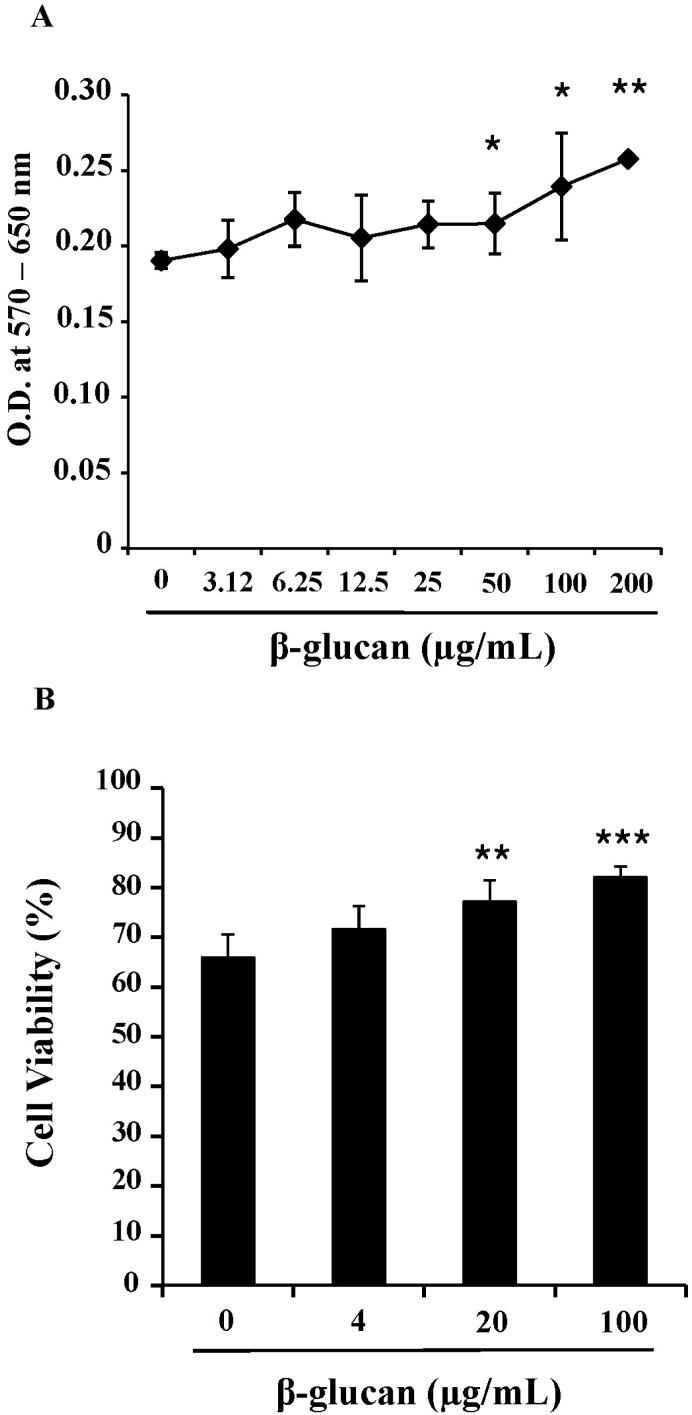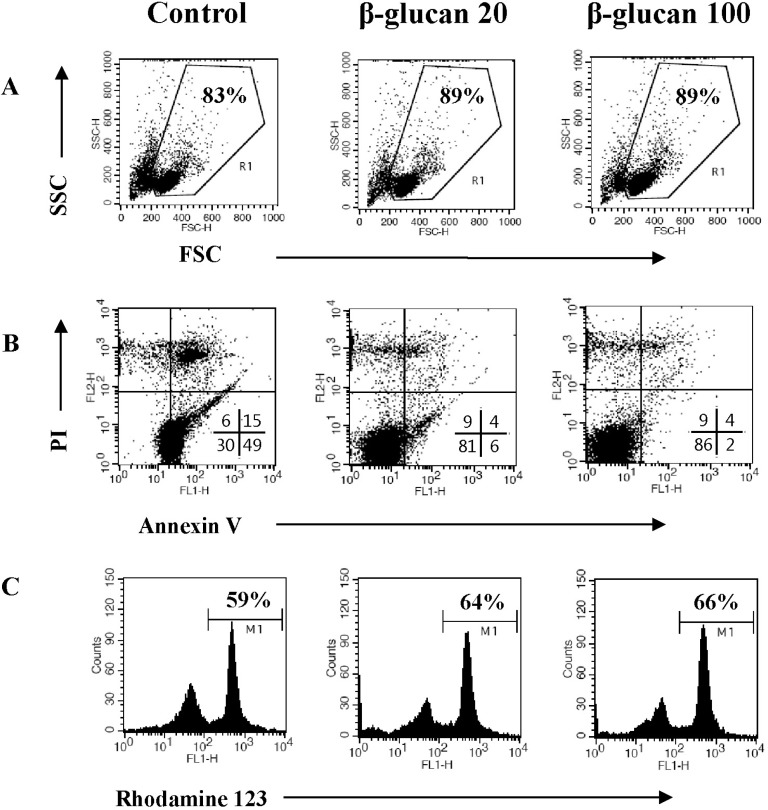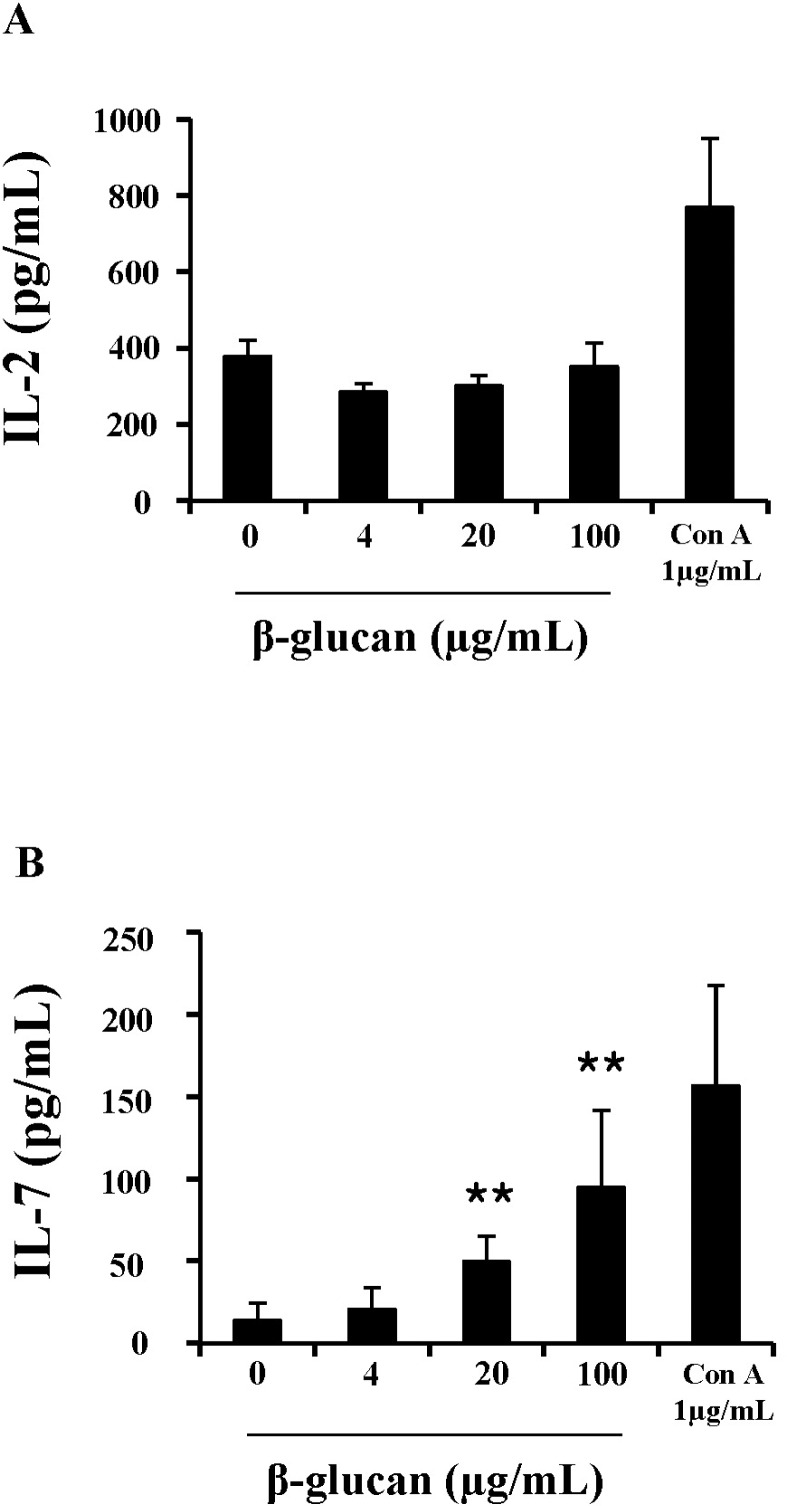INTRODUCTION
METHODS
Animals and reagents
Preparation and culture of mouse splenocytes
Measurement of the viability and proliferation of splenocytes
Flow cytometric analysis
Enzyme-linked immunosorbent assay (ELISA)
Western blot analysis
Statistical analysis
RESULTS
The effect of β-glucan on the viability and proliferation of splenocytes
 | Fig. 1The enhanced viability and proliferation of splenocytes by β-glucan. The splenocytes were cultured at a concentration of 2×105 cells/200 µl in 96-well culture plates. (A) Splenocytes were treated with 0~200 µg/ml of β-glucan for 3 days and MTT assays were performed. (B) Splenocytes were treated with 0~100 µg/ml of β-glucan for 3 days and trypan blue exclusion tests were performed to count viable/dead cells. *,**,***indicate p<0.05, 0.01, and 0.001, respectively, as compared with the control. Data are mean±SD from three or four individual wells. |
 | Fig. 2β-glucan treatment does not alter the proportion of splenic subsets. Splenocytes were treated with 0, 20, or 100 µg/ml for 2 days. The cells were stained for CD4, CD8, and CD19, and analyzed using a flow cytometer. The number in the histograms indicates the percentage of a specific subset. A representative data set is shown from three independent experiments with similar results. |
β-glucan prevents the spontaneous cell death of splenocytes in cytokine-withdrawal condition
 | Fig. 3β-glucan protects splenocytes against spontaneous cell death. Splenocytes were cultured at a concentration of 5×106 cells/5 ml in 6-well culture plates with 0, 20, or 100 µg/ml β-glucan treatment for 2 days. (A) The cell size (FSC/SSC) analysis, (B) annexin V-FITC/PI staining, and (C) Rhodamine 123 staining were performed by a flow cytometer. The number indicates cell percentage (A), the cell percentages in quadrants (B), and the cell percentage with high MFI (C), respectively. Each flow cytometric data set is presented from three independent experiments with similar results. |
β-glucan treatment alters the expression of apoptosis related molecules in splenocytes
 | Fig. 4The altered expression of apoptosis-related molecules in β-glucan-treated splenocytes. Splenocytes were treated as described in Fig. 3 and the cell lysates were prepared for Western blot analysis. A representative image set was selected from two independent experiments with similar results (A). After measuring band densities, the ratio of each band to beta-actin was calculated (B). |
The induction of IL-7 production in β-glucan treated splenocytes
 | Fig. 5β-glucan induces the production of IL-7 in splenocytes. Cells were treated in 96-well plates and their supernatants were used for ELISA analysis to determine IL-2 (A), IL-7 (B) concentrations. **indicates p<0.01 compared to control. Data presented is from three independent experiments with similar results. |
β-glucan activated splenocytes respond to IL-2 dependency
 | Fig. 6β-glucan increases spleen cell sensitivity to IL-2. Splenocytes were treated as described in the Methods. Cells were stained for CD25, CD69, or CD45RB (A) and examined using a lymphocyte proliferation assay with CFSE to check IL-2 dependency (B, C). The number indicates the percentage of cells with high MFI (A), the percentage of smaller/bigger cells in treated splenocytes responding to IL-2 (B), and cells with low MFI (C), respectively. A representative data set was selected from three independent experiments with similar results. |




 PDF
PDF ePub
ePub Citation
Citation Print
Print


 XML Download
XML Download